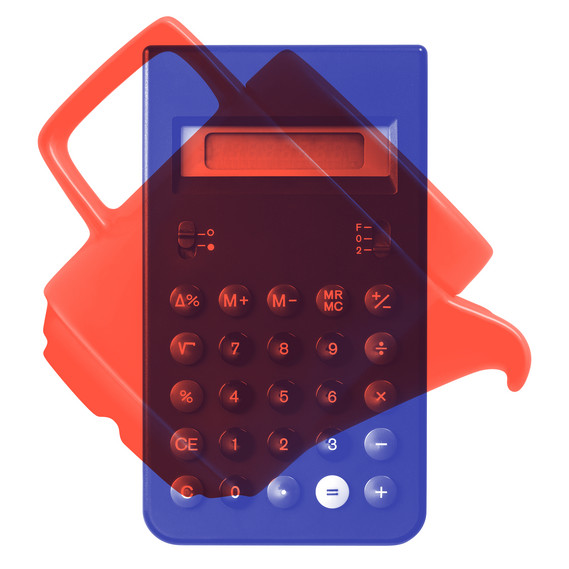German Design 1949–1989
Two Countries, One History
Two Countries, One History
Online Opening Days
19.03.2021 – 08.04.2021
More than thirty years after the fall of the Berlin Wall, the Vitra Design Museum presents the first major overview of post-war design in the two parts of Germany during the Cold War era divide. The exhibition looks at protagonists such as Egon Eiermann and Rudolf Horn, while also highlighting the role of design schools and the Bauhaus legacy as well as iconic designs such the Trabi or Dieter Rams’ minimalist electrical appliances for Braun. It conveys the ideological differences between East and West, as well as the many parallels and cross-pollinations that connected the evolution of design on both sides of the iron curtain. Two countries, one history – under this heading, the exhibition reveals a broad panorama of design in post-war Germany in which identity and ideology, design and global politics were closely intertwined.
More information on the exhibition
An exhibition by the Vitra Design Museum, the Kunstgewerbemuseum, Staatliche Kunstsammlungen Dresden, and the Wüstenrot Foundation.
The exhibition and its international tour are supported by the Federal Foreign Office.
#VDMGermanDesign
Programme
Programme
19 March 2021
Online Opening
Speeches
Dr. Mateo Kries, Director, Vitra Design Museum
Thomas A. Geisler, Director, Kunstgewerbemuseum, Staatliche Kunstsammlungen Dresden
Prof. Philip Kurz, CEO, Wüstenrot Foundation
Michelle Müntefering, Minister of State at the Federal Foreign Office
Two Countries, One History?
Marion Ackermann, Olaf Nicolai, Erik Spiekermann
OPENING TALK (DE/EN)
6 pm (CET), YouTube
Guests for the opening talk include the renowned graphic designer Erik Spiekermann, the artist Olaf Nicolai, and Marion Ackermann, director general of Staatliche Kunstsammlungen Dresden. Moderated by museum director Mateo Kries, the participants will discuss about design in East and West during the period of a divided Germany, different perspectives of a shared history, and the question of how design can contribute to Germany’s continued reunification in the 21st century.
www.design-museum.de/YouTube
21 March 2021
Dieter Rams – A German Design Legend
Instagram Live Talk with Sophie Lovell
DIGITAL TALK (EN)
6 pm (CET), Instagram
Journalist and curator Sophie Lovell, who published the 2011 book »As Little Design as Possible: The Work of Dieter Rams«, is regarded as an expert authority on Dieter Rams’ oeuvre. In a live talk on Instagram, Lovell will join curator Erika Pinner to discuss Dieter Rams, post-war German design and its effects on design trends up to the present day. The talk will be followed by an exclusive stream of the film »Rams« by Gary Hustwit on YouTube.
www.design-museum.de/Instagram
21 March 2021
Screening of the film »Rams« by Gary Hustwit
FILM SCREENING (EN)
6:45 pm (CET), YouTube
Dieter Rams is regarded as the most influential designer of the former West Germany, whose work ranges from legendary electrical appliances and minimalist furnishings to his manifesto »Ten Principles for Good Design«. As part of this evening devoted to Dieter Rams, the expert Sophie Lovell will discuss his work on the Vitra Design Museum’s Instagram channel, followed by an exclusive screening of »Rams«, a cinematic portrait produced by New York filmmaker Gary Hustwit.
www.design-museum.de/YouTube
23 March 2021
How are you doing, Germany?
Christoph Amend and Aelrun Goette
DIGITAL TALK (DE)
6 pm (CET), YouTube
More than 30 years after German reunification, views of »Eastern« and »Western« Germany are still shaped by myths and clichés. Film director Aelrun Goette and Christoph Amend, Editorial Director of ZEIT-Magazin and author of the book »Wie geht’s Dir, Deutschland?« (How are you doing, Germany?), will discuss different biographies in the Eastern and Western part of the country, memories of German design and about the complex relations between design, identity and political history. Moderator: Mateo Kries
www.design-museum.de/YouTube
25 March 2021
Rudolf Horn
DIGITAL TALK (DE)
6 pm, YouTube
Rudolf Horn is regarded as one of the most important furniture designers of the former GDR. His elegant, minimalist designs are rooted in the Bauhaus and the International Style and have left a lasting mark on East German design. Rudolf Horn talks with curator Erika Pinner about the work and training of designers in the former GDR, the role of ideology as well as creative ideas and ideals.
www.design-museum.de/YouTube
8 April 2021
German Design – Making Of
Instagram Live Talk with Konstantin Grcic
DIGITAL TALK (DE)
6 pm (CET), Instagram
Konstantin Grcic, one of Germany’s most prominent contemporary designers, conceived the exhibition in-stallation for »German Design 1949–1989: Two Countries, One History«. Curator Erika Pinner talks with Grcic about their collaborative work on the show and the questions that arose: What stories can objects tell, how can politics and ideology be represented in an exhibition, and which aspects of German design history inspire Konstantin Grcic to this day?
www.design-museum.de/Instagram
![[Translate to English:] Foyer des Palasts der Republik, Berlin, 7. Juli 1977 (Architektur: Heinz Graffunder) © ddrbildarchiv.de / Manfred Uhlenhu [Translate to English:] Foyer des Palasts der Republik, Berlin, 7. Juli 1977 (Architektur: Heinz Graffunder) © ddrbildarchiv.de / Manfred Uhlenhu](/fileadmin/_processed_/a/2/csm_02-VDM-Deutsches-Design-Palast-der-Republik-DDR-Bildarchiv_9b349399a3.jpg)
![[Translate to English:] VEB Textilkombinat Cottbus, DDR Damenmode, 1978, © akg-images / Günter Rubitzsch [Translate to English:] VEB Textilkombinat Cottbus, DDR Damenmode, 1978, © akg-images / Günter Rubitzsch](/fileadmin/_processed_/b/a/csm_1x1-VDM-Deutsches-Design-VEB-Textilkombinat-Cottbus-Ostdeutsche-Frauenmode-1978_e2164d4c64.jpg)
![[Translate to English:] Albert Krause und Martin Kelm, Geschirr und Tabletts, 1959 © Kunstgewerbemuseum, Staatliche Kunstsammlungen Dresden, Foto: Gunter Binsack [Translate to English:] Albert Krause und Martin Kelm, Geschirr und Tabletts, 1959 © Kunstgewerbemuseum, State Art Collections Dresden, Foto: Gunter Binsack](/fileadmin/_processed_/e/5/csm_VDM-Deutsches-Design-Albert-Krause-Dishes-and-Trays-1959_80227811cb.jpg)
![[Translate to English:] Peter Ghyczy, ohne Titel (genannt »Gartenei« und »Senftenberger Ei«), 1968, © Vitra Design Museum, Foto: Jürgen Hans [Translate to English:] Peter Ghyczy, ohne Titel (genannt »Gartenei« und »Senftenberger Ei«), 1968, © Vitra Design Museum, Foto: Jürgen Hans](/fileadmin/_processed_/d/d/csm_VDM-Deutsches-Design-Peter-Ghyczy-Senftenberger-Ei-rot-1968_6a89f2f22e.jpg)
![[Translate to English:] Mauerfall in Berlin, 12. November 1989 © Tim Wegner / laif [Translate to English:] Mauerfall in Berlin, 12. November 1989 © Tim Wegner / laif](/fileadmin/_processed_/5/7/csm_VDM-Deutsches-Design-Tim-Wegner-laif-Mauerfall-Berlin-1989_665a2345cc.jpg)
![[Translate to English:] Dieter Rams, T 1000 (genannt »Weltempfänger«), 1963, © Vitra Design Museum, Foto: Andreas Sütterlin [Translate to English:] Dieter Rams, T 1000 (genannt »Weltempfänger«), 1963, © Vitra Design Museum, Foto: Andreas Sütterlin](/fileadmin/_processed_/3/d/csm_VDM-Deutsches-Design-Dieter-Rams-Weltempfaenger-T1000-1963_86bae07ce1.jpg)
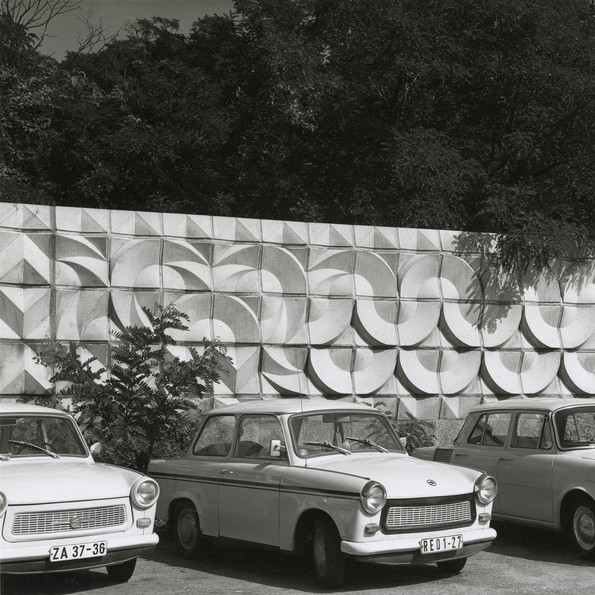
![[Translate to English:] Margarete Jahny und Erich Müller, Glasserie »Europa«, 1964, © Kunstgewerbemuseum, Staatliche Kunstsammlungen Dresden, Foto: Gunter Binsack [Translate to English:] Margarete Jahny und Erich Müller, Glasserie »Europa«, 1964, © Kunstgewerbemuseum, Staatliche Kunstsammlungen Dresden, Foto: Gunter Binsack](/fileadmin/_processed_/b/4/csm_VDM-Deutsches-Design-Margarete-Jahny-Glasserie-Europa-1964_a68ae64097.jpg)
![[Translate to English:] Dieter Rams; Vitsoe 606 (RZ 60), 1960 © Vitra Design Museum, Foto: Jürgen Hans [Translate to English:] Dieter Rams; Vitsoe 606 (RZ 60), 1960 © Vitra Design Museum, Foto: Jürgen Hans](/fileadmin/_processed_/e/f/csm_VDM-Deutsches-Design-Dieter-Rams-Vitsoe-606-1960_ae33c41c2f.jpg)
![[Translate to English:] Rudolf Horn und Eberhardt Wüstner, MDW-Montagemöbel, 1967, Archiv Rudolf Horn, Foto: Friedrich Weimer, Dresden [Translate to English:] Rudolf Horn und Eberhardt Wüstner, MDW-Montagemöbel, 1967, Archiv Rudolf Horn, Foto: Friedrich Weimer, Dresden](/fileadmin/_processed_/f/9/csm_VDM-Deutsches-Design-Rudolf-Horn-Eberhardt-Wuestner-MDW-Montagemoebel-1967_fdce557902.jpg)
Speaker Bios
Speaker Bios
Marion Ackermann
Marion Ackermann is a German art historian, curator and museum director. She has headed the Kunstmuseum Stuttgart, the Kunstsammlung Nordrhein-Westfalen and since November 2016 has been Director General of the Staatliche Kunstsammlungen Dresden. Her work is defined by an interest in creating spaces for freedom and personal encounters in which visitors can develop their own attitudes to cultural and transcultural processes. In this spirit, the cooperation with the Vitra Design Museum for the exhibition »German Design 1949–1989: Two Countries, One History« takes an inspiring look at the similarities, contradictions and differences between East and West German design history.
![[Translate to English:] Marion Ackermann © Oliver Killig [Translate to English:] Marion Ackermann © Oliver Killig](/fileadmin/_processed_/6/5/csm_Marion_Ackermann__c__Oliver_Killig_sw_2676b21e02.jpg)
Olaf Nicolai
Olaf Nicolai is a German visual artist whose oeuvre is represented in institutions such as Museum Boijmans van Beuningen in Rotterdam, the Museum of Modern Art in New York or the Centre Georges Pompidou in Paris. But his works can also be encountered in surprising places outside museums. For Berlin Airport, he recently executed a functional installation with light signals that are directly related to the procedures at the adjoining gate. He contributed several times to the documenta and in 2015 his performative installation »Giro« was exhibited during Venice Biennale on the roof of the German pavillion. Olaf Nicolai was born in Karl-Marx-Stadt (today Chemnitz), studied literature and linguistics in Leipzig and graduated from the Academy of Applied Arts in Schneeberg in 1988. Since 2011, Olaf Nicolai has been professor of sculpture at the Academy of Fine Arts in Munich.
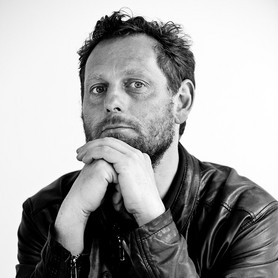
Erik Spiekermann
Erik Spiekermann’s graphic identity and design work has been a distinctive part of the visual landscape since the 1970s. As founder of MetaDesign and Edenspiekermann, he gave a defining look to Berlin’s public transport system, Deutsche Bahn, The Economist and companies such as Audi, Volkswagen and Bosch, among others. His work has been recognized with Europe’s most prestigious prizes and honours, including the Royal Designer for Industry title from the British Royal Society of Arts. FontShop, the first mail-order distributor for computer fonts, can be traced to his creative initiative, as can numerous typeface designs, such as ITC Officina and FF Meta – both of which are now classics on many hard drives. To this day, he remains a central figure in the German and international design scene. After retiring from active business, he now runs an experimental letterpress workshop in Berlin under the motto »Hacking Gutenberg«.
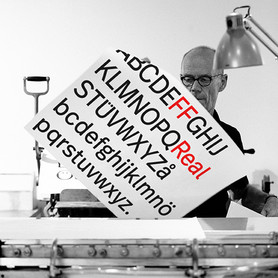
Sophie Lovell
Editor, writer and publisher Sophie Lovell is known for her work on numerous innovative publications in the fields of design and architecture. Among other roles, she has served as editor-in-chief of the digital architecture magazine uncube, the Germany editor of Wallpaper* and also helped found pioneering publishing projects such as the &beyond collective. Her best-known books include the monograph »Dieter Rams: As Little Design as Possible« (2011), and she is also a featured expert on the designer in Gary Hustwit’s acclaimed documentary »Rams« (2018). With her daughter Orlando Lovell, she co-founded studio_lovell and The Common Table, a new platform for systemic change in food culture.
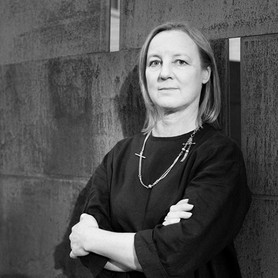
Gary Hustwit
Gary Hustwit is an American filmmaker and photographer. He became a favourite director of the design scene with his highly acclaimed documentary trilogy »Helvetica« (2007), »Objectified« (2009) and »Urbanized« (2011), which addresses the complex role of architecture, industrial design, typography and urban planning in our everyday lives. The documentary »Rams« (2018) with original music by Brian Eno is an impressive portrait of Dieter Rams, one of the most influential designers of our time. Hustwit’s cinematic and photographic work is represented in numerous collections, including the Museum of Modern Art in New York, the Design Museum London and the Colette Gallery in Paris.
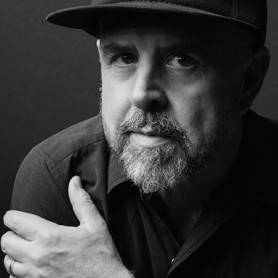
Christoph Amend
Christoph Amend, born in 1974, is a distinguished journalist, author, podcaster and editorial director of ZEITmagazin. He studied English and political science, became an editor for Süddeutsche Zeitung’s youth magazine jetzt in 1996 and later joined the staff of Tagesspiegel in Berlin. He has worked for DIE ZEIT since 2004. His books and reports have earned him the Hermann Hesse prize for up-and-coming writers and the Axel Springer Prize, among others. As an author, he is best known for »Wie geht’s Dir, Deutschland?«, published in 2019. The book is based on Amend’s encounters with prominent personalities and various private conversations. Amend processes these into a differentiated reflection on the political, cultural and social divisions and areas of common ground in German society.
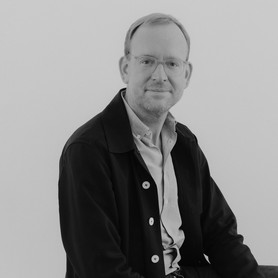
Aelrun Goette
Aelrun Goette is a writer and director of documentary and feature films. Born and raised in East Berlin, she had to leave school after the 10th grade. After the fall of the Wall, she first studied philosophy at Humboldt University in Berlin and then directing at the Academy for Film and Television in Potsdam Babelsberg. Her films have received numerous national and international accolades – including two Grimme Awards and the German Film Award in Gold. She has been an honorary professor at the Babelsberg Film University since 2019. Her current project »In einem Land, das es nicht mehr gibt« (In a Country That No Longer Exists) tells of the unknown, glamorous world of fashion in the GDR and the associated questions about individual and societal freedom that are still relevant today.
![[Translate to English:] Aelrun Goette [Translate to English:] Aelrun Goette](/fileadmin/_processed_/f/e/csm_Aelrun_Goette__c__Andre_Hercher_sw_4d30f4fb3f.jpg)
Rudolf Horn
Rudolf Horn, born in Waldheim in 1929, is one of the most important furniture designers of the GDR, best known for the modular furniture system MDW (Montagemöbel Deutsche Werkstätten). The simply designed variable furniture, assembled by users themselves, could be found in numerous East German homes and was far ahead of its time. Horn was director of the Institute for Furniture and Interior Design at what later became the School for Industrial Design – Halle / Burg Giebichenstein, where he taught from 1966 to 1997 and influenced generations of students. In addition to system furniture, Horn also designed sophisticated and technically complex individual furnishings. His »Konferstar« club chair in stainless steel and leather, inspired by Mies van der Rohe’s »Barcelona Chair«, is one of the classics of modernism. A re-edition of this cantilever chair has been in production since 2019, distributed by Deutsche Werkstätten in Hellerau.
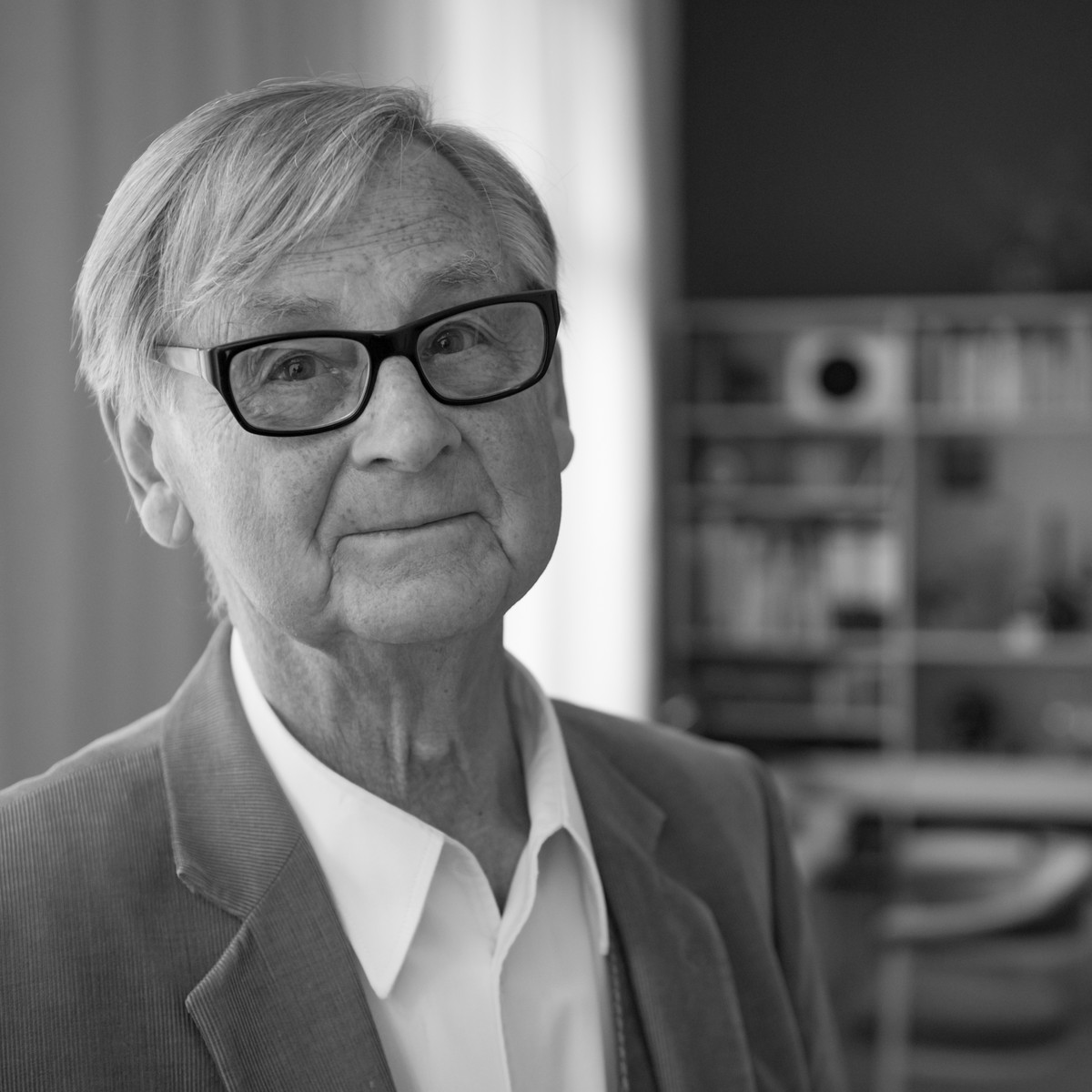
Konstantin Grcic
Konstantin Grcic trained as a cabinet maker before studying design at the Royal College of Art in London. In 1991 he set up his own office, Konstantin Grcic Design, which is active in numerous fields ranging from industrial design, furniture and exhibition design to architectural collaborations. His work is characterized by careful research into the history of art, design and architecture and attests to his passion for technology and materials. Many of Grcic’s products have received international design awards and his work can also be found in the permanent collections of important design museums such as Die Neue Sammlung in Munich or Centre Georges Pompidou in Paris.
![[Translate to English:] © Konstantin Grcic, Foto: Markus Jans [Translate to English:] © Konstantin Grcic, Foto: Markus Jans](/fileadmin/_processed_/5/f/csm__c__Konstantin_Grcic_Foto_Markus_Jans_sw_c34a4e0c91.jpg)
Moderator Bios
Biografien der Moderatoren
Erika Pinner
Erika Pinner has been on the Vitra Design Museum’s curatorial team since 2015, as a curator since 2019. Her first full-scale exhibition, entitled »German Design 1949–1989: Two Countries, One History« will open at the Vitra Design Museum in spring 2021. As curator of the Vitra Schaudepot in 2019, she realised the exhibitions »Living in a Box: Design and Comics« and »After the Wall: Design since 1989«. Previously, she was assistant curator for the exhibitions »Hello, Robot: Design between Human and Machine« (2017) and »Victor Papanek: The Politics of Design« (2018).
![[Translate to English:] Erika Pinner © Nathalie Opris [Translate to English:] Erika Pinner © Nathalie Opris](/fileadmin/_processed_/5/1/csm_portrait_erika_pinner_2021_copyright_nathalie_opris_cba2413d3e.jpg)
Mateo Kries
Mateo Kries has been director of the Vitra Design Museum since 2011. He joined the Vitra Design Museum in 1995, working first as a curator, then as manager of the Vitra Design Museum’s branch in Berlin, where he also co-founded the DESIGNMAI festival, before moving on to become Chief Curator at the Vitra Design Museum in Weil am Rhein. Mateo has been responsible for numerous exhibitions and has published a wide range of books and papers. He has written about such architecture and design personalities as Le Corbusier, Joe Colombo, and Konstantin Grcic, and topics including design and surrealism as well as non-Western design. Many of his publications address the social, political, and theoretical aspects of design and architecture. His book »Total Design« examining contemporary perceptions of design was published in 2010. Mateo is co-editor of the »Atlas of Furniture Design« (2019), the most comprehensive book on furniture design ever published. Mateo holds a Master of Arts degree in History of Art and Sociology and a DPhil in History of Art from Berlin’s Humboldt University.
![[Translate to English:] Mateo Kries : © Vitra Design Museum, Foto: Lucia Hunziker [Translate to English:] Mateo Kries : © Vitra Design Museum, Foto: Lucia Hunziker](/fileadmin/user_upload/Redaktion/VDM_Portrait_MateoKries_web.jpg)

